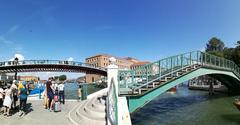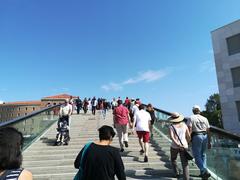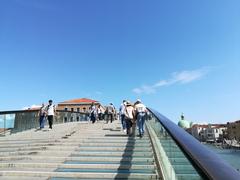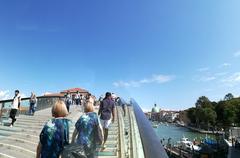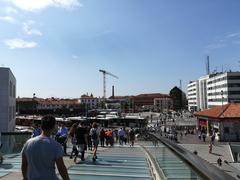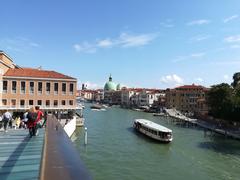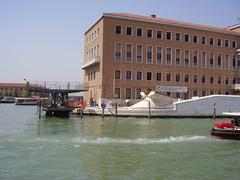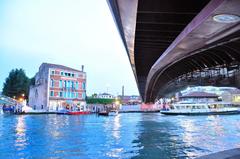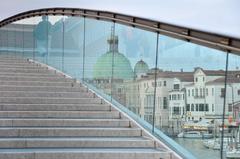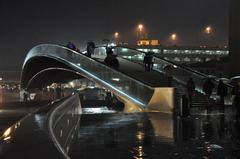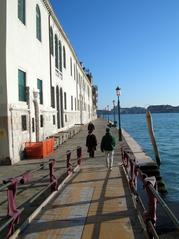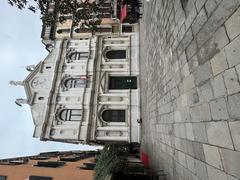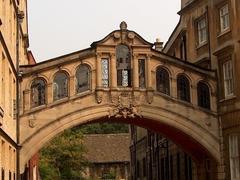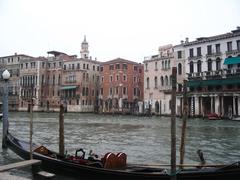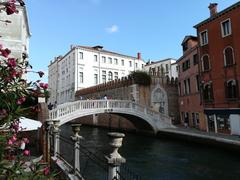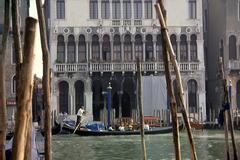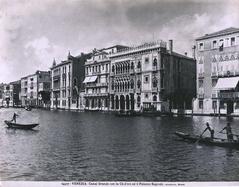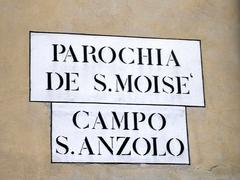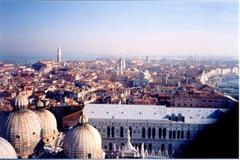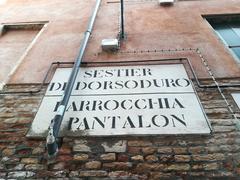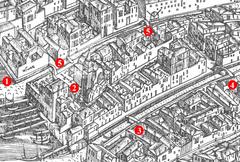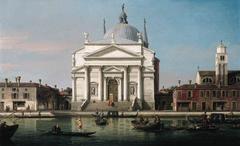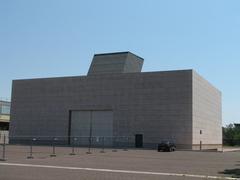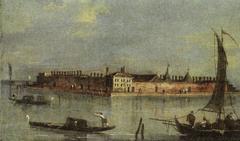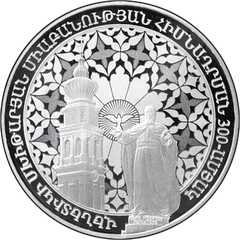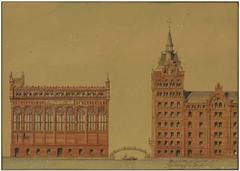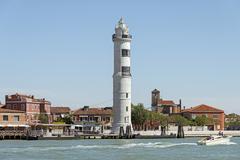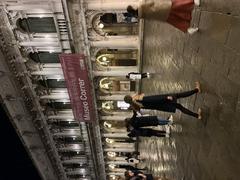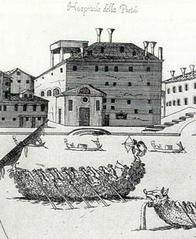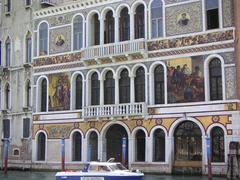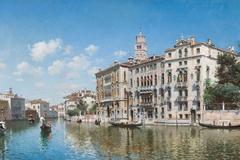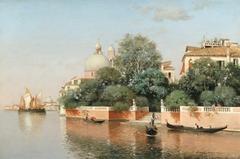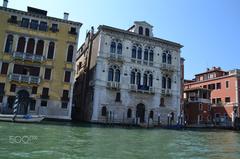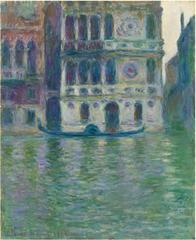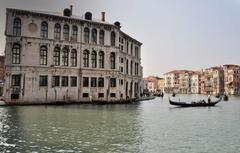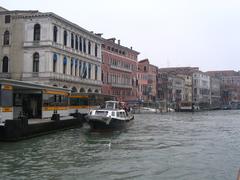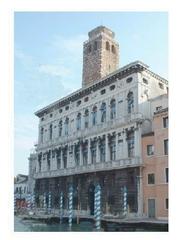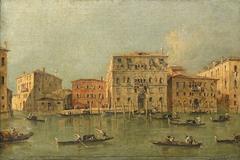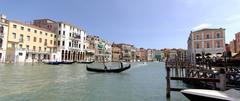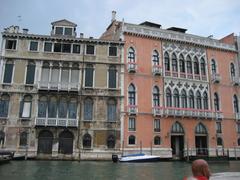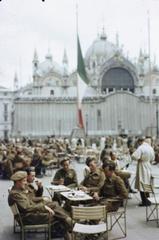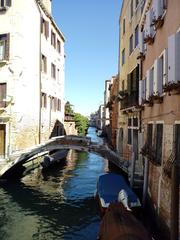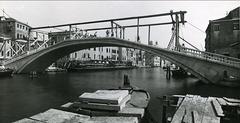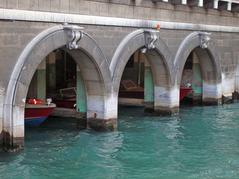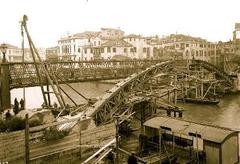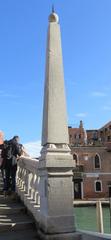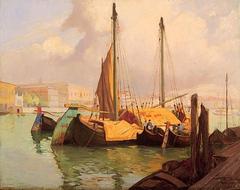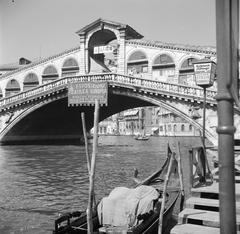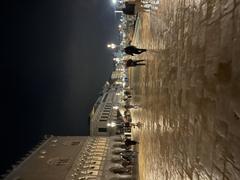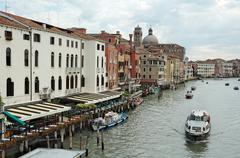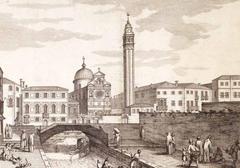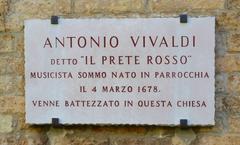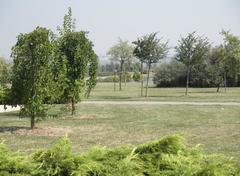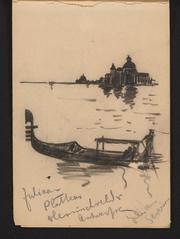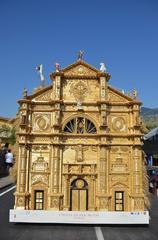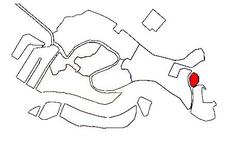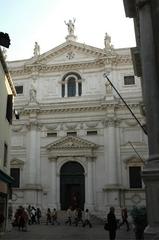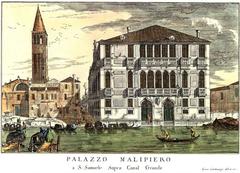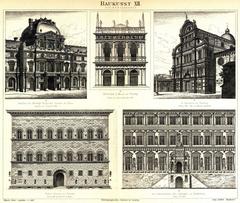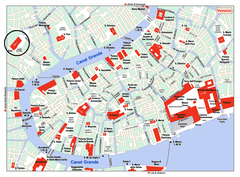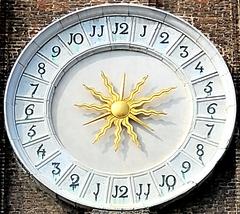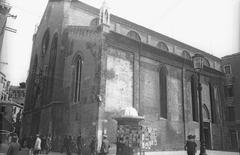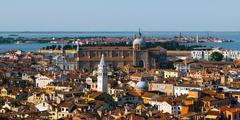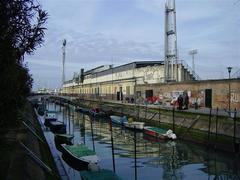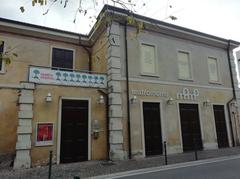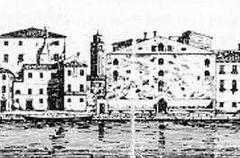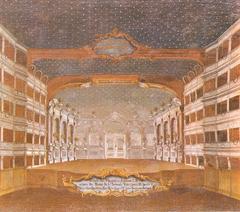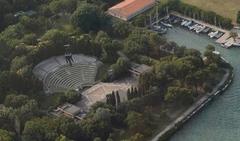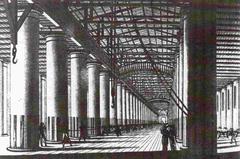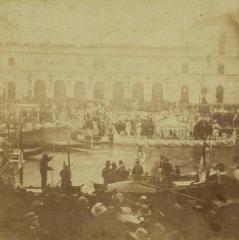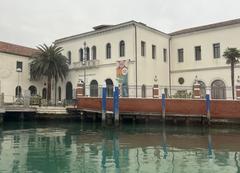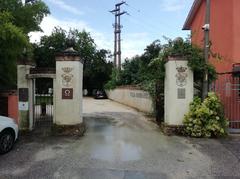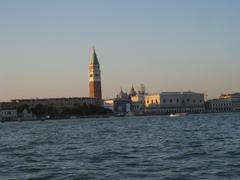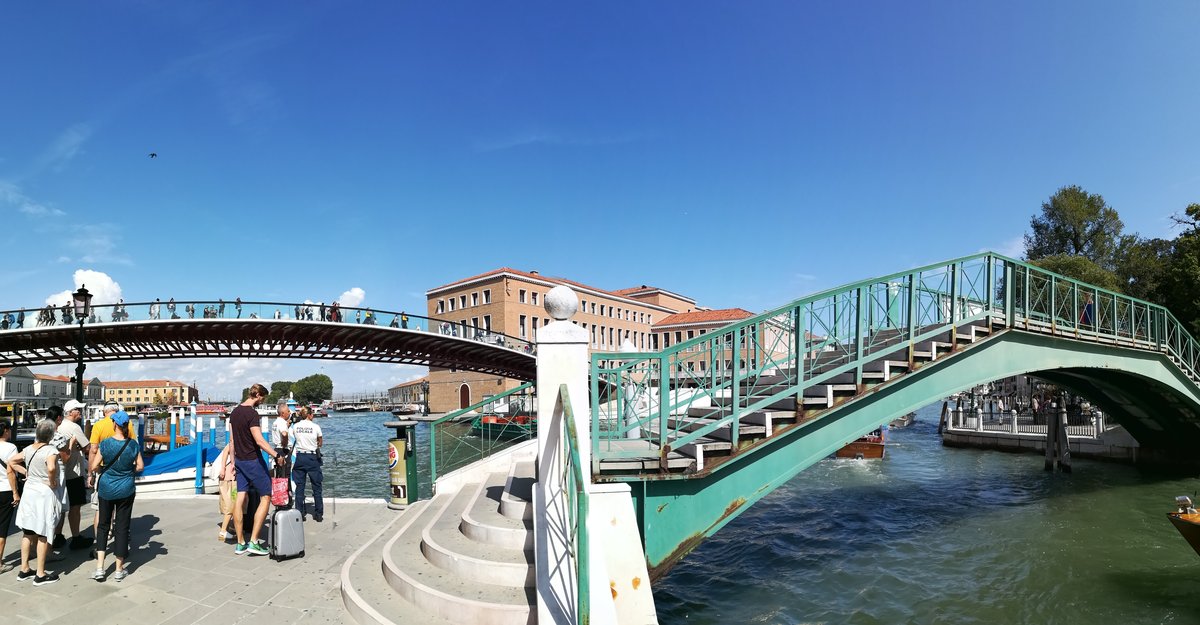
Visiting Ponte della Costituzione: Hours, Tickets, and Historical Significance
Date: 18/07/2024
Overview of Ponte della Costituzione
The Ponte della Costituzione, commonly referred to as the Constitution Bridge, exemplifies Venice’s blend of historical heritage and modern architectural innovation. Designed by the illustrious Spanish architect Santiago Calatrava, this bridge was conceived in the late 20th century to meet the demand for another pedestrian crossing over the Grand Canal. Officially inaugurated in 2008, the bridge connects the bustling Piazzale Roma with the Santa Lucia railway station, enhancing urban mobility and easing pedestrian traffic. Despite its functional significance, the bridge has been a focal point of numerous debates and controversies, particularly concerning its contemporary design juxtaposed against Venice’s iconic Gothic and Renaissance architecture. The project, initially budgeted at €6.7 million, saw costs escalate to approximately €11.2 million, further fueling public discourse (The Guardian).
Constructed from steel and glass, the Ponte della Costituzione stretches 94 meters in length and 9 meters in width. It features a deck of tempered glass and Istrian stone, with parapets made of glass and bronze. Its sleek, arching form not only offers panoramic views of the Grand Canal but also symbolizes Venice’s bridge between its storied past and a progressive future (Calatrava). However, the bridge has faced significant criticism for its lack of accessibility, particularly for disabled individuals, leading to the installation and subsequent dismantling of a mechanical lift system. Despite these challenges, the Ponte della Costituzione remains a vital part of Venice’s urban landscape, reflecting the city’s ongoing efforts to balance tradition with modernity (BBC).
Table of Contents
- Overview of Ponte della Costituzione
- Conception and Design
- Construction and Controversies
- Structural Features and Design
- Accessibility Issues
- Visitor Information - Tickets, Visiting Hours, and Travel Tips
- Inauguration and Public Reception
- Maintenance and Preservation
- Cultural and Symbolic Significance
- Impact on Urban Mobility
- Future Prospects
- Frequently Asked Questions (FAQ)
- Conclusion
Conception and Design
The Ponte della Costituzione, also known as the Constitution Bridge, is the fourth bridge to span the Grand Canal in Venice, Italy. Its inception dates back to the late 20th century when the need for a new pedestrian bridge became apparent. The bridge was designed by Santiago Calatrava, known for his futuristic and innovative designs. The project was commissioned in 1999 to ease pedestrian traffic between the Piazzale Roma, the main bus terminal, and the Santa Lucia railway station.
Construction and Controversies
Construction of the Ponte della Costituzione began in 2003 and was fraught with delays and controversies. The bridge’s modern aesthetic contrasted sharply with Venice’s historic architecture, leading to significant public debate. Additionally, the project faced technical challenges and budget overruns. Initially estimated to cost €6.7 million, the final expenditure ballooned to approximately €11.2 million (The Guardian).
Structural Features and Design
The Ponte della Costituzione is 94 meters long and 9 meters wide, constructed primarily from steel and glass. The deck is made of tempered glass and Istrian stone, while the parapets are composed of glass and bronze. The structure’s arching form and transparent materials create a visually striking effect, allowing pedestrians to enjoy panoramic views of the Grand Canal. The bridge’s design also incorporates LED lighting, which illuminates the structure at night, enhancing its modern aesthetic (Calatrava).
Accessibility Issues
One of the most significant controversies surrounding the Ponte della Costituzione was its lack of accessibility for disabled individuals. The original design did not include provisions for wheelchair access, leading to widespread criticism. In response, a mechanical lift system was installed in 2013, but it was plagued with technical issues and was eventually dismantled in 2019. The bridge’s steep incline and glass steps also posed challenges for elderly pedestrians and those with mobility impairments (BBC).
Visitor Information - Tickets, Visiting Hours, and Travel Tips
The Ponte della Costituzione is open to pedestrians 24 hours a day, making it accessible at any time for those wishing to cross the Grand Canal. There is no ticket required to access the bridge, as it is a public pedestrian pathway. For those visiting Venice, it is recommended to wear comfortable walking shoes due to the bridge’s glass steps and inclines. Nearby attractions include the Santa Lucia railway station, Piazzale Roma, and other notable Venice historical sites such as the Rialto Bridge and St. Mark’s Basilica.
Inauguration and Public Reception
The Ponte della Costituzione was officially inaugurated on September 11, 2008, coinciding with the 60th anniversary of the Italian Constitution, from which the bridge derives its name. The inauguration ceremony was attended by various dignitaries, including the then-Mayor of Venice, Massimo Cacciari. Despite the controversies and challenges, the bridge has become an integral part of Venice’s urban landscape, facilitating the movement of thousands of pedestrians daily.
Maintenance and Preservation
Maintaining the Ponte della Costituzione has proven to be a complex and costly endeavor. The bridge’s glass steps have required frequent repairs due to wear and tear, and the steel structure has necessitated regular maintenance to prevent corrosion. In 2019, the city of Venice allocated additional funds for the bridge’s upkeep, recognizing its importance as a vital pedestrian link and a modern architectural landmark (Venice Municipality).
Cultural and Symbolic Significance
Beyond its functional role, the Ponte della Costituzione holds cultural and symbolic significance. It represents a bridge between the past and the future, blending modern design with the historic fabric of Venice. The bridge’s name, commemorating the Italian Constitution, underscores its symbolic value as a testament to democratic principles and national unity. Despite the initial controversies, the bridge has gradually gained acceptance and appreciation among locals and visitors alike.
Impact on Urban Mobility
The construction of the Ponte della Costituzione has had a significant impact on urban mobility in Venice. By providing a direct pedestrian link between two major transportation hubs, the bridge has alleviated congestion and improved accessibility. It has also enhanced the overall connectivity of the city’s public transportation network, making it easier for residents and tourists to navigate Venice’s labyrinthine streets and canals.
Future Prospects
Looking ahead, the Ponte della Costituzione is expected to continue playing a crucial role in Venice’s urban infrastructure. Ongoing maintenance and preservation efforts will be essential to ensure the bridge’s longevity and functionality. Additionally, there are discussions about further improving accessibility and addressing the needs of all pedestrians, reflecting a broader commitment to inclusivity and sustainability in urban planning.
Frequently Asked Questions (FAQ)
What are the visiting hours for Ponte della Costituzione?
The bridge is open to pedestrians 24 hours a day.
Is Ponte della Costituzione accessible for disabled visitors?
The bridge has faced accessibility issues, and while a mechanical lift was installed in 2013, it was dismantled in 2019. The steep incline and glass steps may pose challenges for those with mobility impairments.
Do I need a ticket to visit Ponte della Costituzione?
No, the bridge is a public pedestrian pathway and does not require a ticket.
What nearby attractions can I visit?
Nearby attractions include the Santa Lucia railway station, Piazzale Roma, Rialto Bridge, and St. Mark’s Basilica.
Conclusion
In summary, the history of the Ponte della Costituzione is a tale of innovation, controversy, and adaptation. From its conception and design by Santiago Calatrava to its construction, public reception, and ongoing maintenance, the bridge embodies the dynamic interplay between tradition and modernity in Venice. As a vital pedestrian link and a symbol of contemporary architecture, the Ponte della Costituzione continues to shape the urban landscape and cultural identity of Venice.
References
- Ponte della Costituzione - Visiting Hours, Tickets, and History of Venice’s Modern Marvel, 2024, The Guardian https://www.theguardian.com
- Calatrava, 2024, Calatrava https://calatrava.com
- BBC, 2024, BBC https://www.bbc.com
- Venice Municipality, 2024, Venice Municipality https://www.comune.venezia.it
